Branding 101:
Brand Messaging

Why Good Design Needs Good Writing
When you’re building a brand, it’s easy to get swept up in the visuals—picking the perfect colors, obsessing over fonts, tweaking your logo until it’s pixel-perfect—but design is only half the story. The truth is, great design might turn heads, but great messaging keeps people around.
Brand messaging is one of the most overlooked, but absolutely essential, ingredients in your branding recipe. It’s the voice in your customer’s ear and the personality that breathes life into your visuals. Yet far too often, businesses will spend months perfecting their visual identity only to slap in placeholder text at the last minute and call it a day.
What is Brand Messaging?
Let’s break it down into two components. Brand messaging encompasses all the ways you communicate your brand using brand voice and brand tone.
Brand voice is your brand’s personality in written form. These are the words you choose, the rhythm of your sentences, and the overall vibe. It’s consistent and steady, no matter the medium.
Brand tone, on the other hand, is how you adjust that voice depending on the situation. Think of voice as your brand’s core identity, and tone as how that identity expresses itself in context, like a birthday party vs. a board meeting.
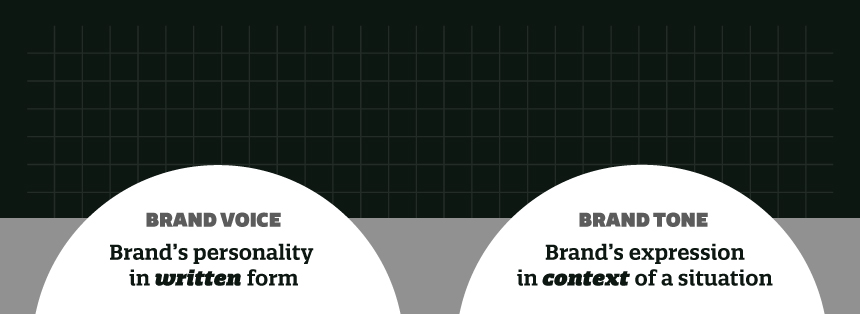
Need an example? Imagine a fictional oat milk company called Grumpy Oats. Their brand voice is sarcastic, a little cranky, and full of dry humor. On Instagram, their tone might be playful: “We’re not saying this oat milk will change your life, but we’re not not saying that either.” On their packaging, it might lean more practical (but still on-brand): “Shake before pouring. Or don’t. We’re not your boss.”
Why Does Brand Messaging Matter?
Because unless your brand communicates exclusively through interpretive dance, you’re going to need words. Lots of them. Websites, packaging, product descriptions, social posts, ads, videos—all of these require consistent, thoughtful messaging. In fact, 33% of consumers say that a distinct personality is the reason a brand stands out to them. That’s a third of your audience making decisions based on how you say things, not just what you look like.
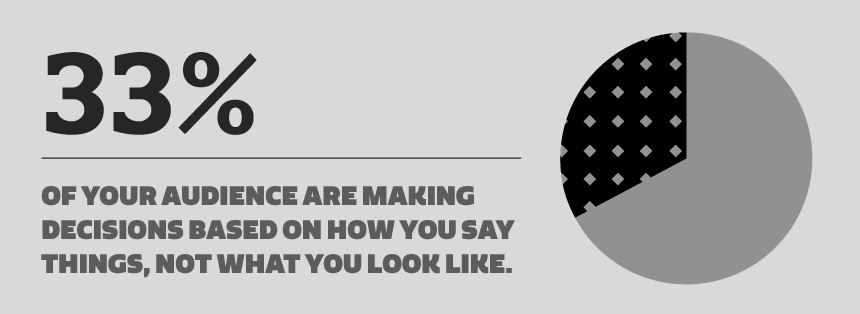
Good brand messaging not only makes your brand more memorable, it also gives future marketers, copywriters, and content creators a blueprint to follow, ensuring that everything from your tweets to your email campaigns feels like it came from the same intentional, totally-you place.
How to Find Your Brand Tone & Voice
Strategy First
Just like your logo or website, your brand’s communication style is part of the foundation of your brand and should be rooted in your brand’s larger strategy.
A solid brand strategy helps you define who you are, who you’re for, and how you’re different. It’s your game plan, the guiding force behind every creative decision that follows. Before you even think about crafting messaging or selecting a font, you need to understand your audience, your market landscape, your differentiators, and your brand’s core attributes. This is the groundwork that shapes your tone and voice.

Think of brand strategy as the compass that keeps everything from visuals to messaging to customer experience, pointing in the same direction. Without it, you risk building a brand that looks great but doesn’t resonate and feels inconsistent.
A lot goes into building your brand strategy. To dive deeper, check out another blog in our 101 series:

Building Your Brand Message
Once your brand strategy is clearly defined, you can move on to developing your brand message. The good news? You’re not starting from scratch. If you’ve already done the strategic heavy lifting, you likely have a brand positioning statement that outlines your value, your unique traits, and the personality you want to convey. That’s your jumping-off point.
Start by asking yourself: What are three words that describe my brand’s personality?
Are you bold, quirky, and a little rebellious? Or thoughtful, elegant, and reassuring? These words are the foundation for your voice and tone.
To refine them, think about your ideal customer:
- What’s their personality like?
- What do they care about?
- What kind of messaging would resonate with them (and what would turn them off)?
- What makes them choose you over someone else?

Still not sure? Flip the script—try listing what your brand isn’t. Sometimes it’s easier to get clarity by identifying what you want to avoid. If you’re a high-end skincare brand, maybe you’re not playful or casual. If you’re a neighborhood bike shop, maybe you’re not overly polished or corporate.
This process is less about forcing your brand into a box and more about finding an authentic, consistent way to show up in the world, one that your customers will connect with, remember, and come back to. When your messaging aligns with your strategy, your brand becomes more than just something people buy—it becomes something they believe in.

The Do’s & Don’ts of Brand Messaging
Whether they’re tucked into your homepage, spoken over a brand video, printed on packaging, or captioning your latest TikTok, the way your brand sounds is just as important as how it looks, especially in a time when attention spans are shrinking and people don’t want to read more than they have to. Here are some of the key do’s and don’ts when it comes to creating brand messaging that works.
DO's:
1. Create a messaging guidelines document
If you want your brand voice to stay consistent across platforms, campaigns, and collaborators, a messaging guide is a must. This document should spell out your tone of voice, preferred vocabulary, terms to avoid, how to refer to your products or services (down to the correct spelling and pronunciation), and anything else someone might need to know in order to write on-brand. Whether it’s your marketing team, a freelance writer, or a social influencer talking about you in a partnership post, this guide should help them all speak your language.

2. Sound like a human
No one wants to read content that sounds like it was generated by a bot or corporate handbook. If your messaging reads like a press release from a boardroom instead of a conversation with a real person, it’s time to loosen up. Ask yourself: Would a real person actually say this? If the answer is no, rewrite it until it sounds like someone your audience would actually want to talk to.
3. Develop your own voice
Your brand voice shouldn’t sound like everyone else’s. It should feel unique and true to who you are. Are you clever and cheeky? Calm and reassuring? Bold and irreverent? Whatever the case, own it. The more distinct your voice is, the more likely people are to recognize and remember you.
DON’Ts:
1. Chase every trend
Yes, we live in an age of memes and micro-moments. But unless it fits naturally with your brand’s personality, don’t force it. Throwing in slang or TikTok references just to seem relevant can feel out of place or cringey. That said, some brands can pull this off brilliantly when they do it with self-awareness or satire. If it works for your brand, go for it, but make sure you’re doing it intentionally, not out of FOMO.
2. Ignore your audience
Brand messaging should be a two-way conversation. Listen to what your audience is saying. What do they care about? What kind of language do they use? What makes them feel seen, heard, or inspired? The best messaging makes your customers feel like you’re talking with them, not at them.
3. Rely solely on AI (but DO use it wisely)
Let’s talk about the AI elephant in the room. Tools like ChatGPT are great for brainstorming, outlining, or kicking off ideas, but they’re not a substitute for a human voice.
AI is getting better at mimicking how real people write (looking at you, em-dash), but most consumers are getting savvier too. Overuse of buzzwords like “revolutionary” or “game-changer,” awkward sentence structures, emoji overload, or content that feels just a little too polished or too generic? Those can be giveaways that your messaging was phoned in or fully outsourced to a bot.
Luckily, AI can be a useful tool for brainstorming, outlining, and drafting. As a rule of thumb, if you’re using AI, always pass the draft through a human editor. Someone with a strong grasp of your brand’s voice can fine-tune the tone, trim the fluff, and make sure it actually sounds like you. The goal isn’t to trick people—it’s to communicate in a way that’s clear, authentic, and unmistakably yours.
Bottom line: AI is a powerful tool, especially when used strategically. But the magic of brand messaging still lies in human creativity, emotional intelligence, and nuance. Don’t lose that in the name of efficiency.
Where Should You Use Brand Messaging
If your brand is communicating with a customer, there’s an opportunity to reinforce your voice and personality. From billboard ads to “Oops, you forgot something in your cart!” emails, every word is a chance to deepen your connection with your audience. Brand messaging isn’t just for your homepage or a slogan—it’s baked into packaging, product descriptions, app notifications, customer service scripts, and even error messages.
Need some inspiration? Here are a few brands that are absolutely crushing the messaging game, from big-name icons to newer players with something to say.
Nike: The Slogan King
Is there a more recognizable slogan than “Just Do It”? Nike took the slogan crown way back in 1988 when Just Do It debuted, and has been showing us how it’s done ever since. Why does this slogan work so well? It’s short, motivational, and crystal-clear. But what makes it great isn’t just the phrase itself—it’s how Nike has consistently reinforced that message across decades of campaigns. Every ad, every athlete story, every social post supports the same core idea: you’ve got what it takes. Whether you’re a marathoner or someone who just bought their first pair of running shoes, Nike’s brand voice makes you feel like you belong.
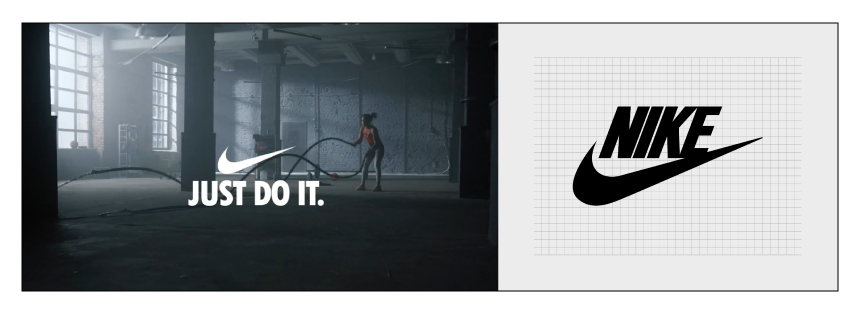
Billie: Product Packaging At Its Best
Billie turns the unboxing experience into a full-on brand moment. When you open one of their subscription shaving kits, you're greeted with cheeky, charming lines like “Hi Hello. Time to give your lady bod some love.” and “Come hang with us. @billie.” Even the bag that holds your razor comes with a wink: “A holder for your handle. (It’s magical.)” Billie’s messaging is warm, playful, and affirming, proving that even the smallest bits of copy are opportunities to connect and delight.
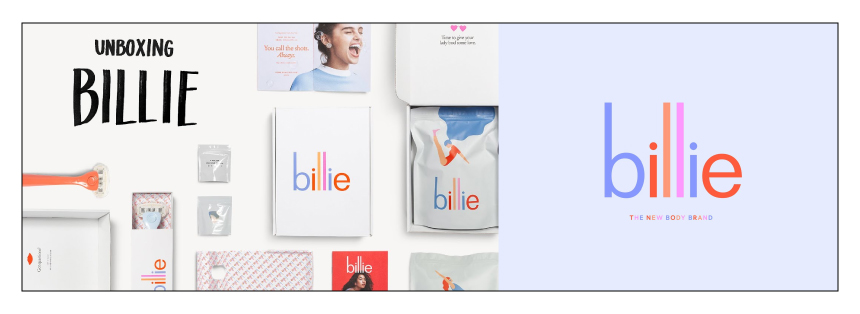
Liquid Death: The All-Around Champs
Water that looks like a beer can and talks like a punk band? Liquid Death has made a name for itself by not sounding like any other beverage brand. With messaging like “Murder Your Thirst,” and copy that reads like it was written by a tattooed stand-up comic, their branding is rebellious, funny, and completely unforgettable. From their packaging to their Instagram captions, Liquid Death is proof that when your brand voice is bold and consistent, you can build an entire cult following around something as simple as water.
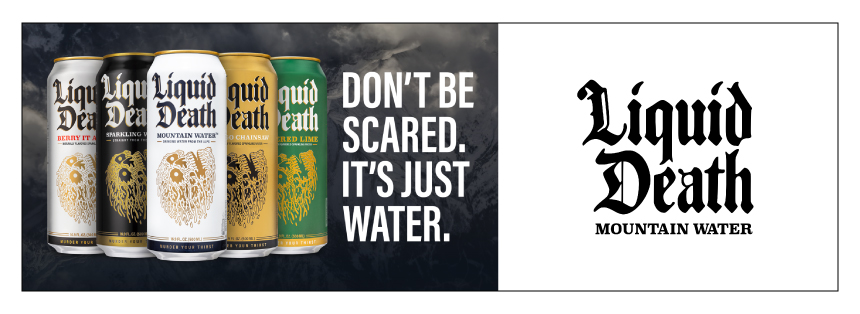
Duolingo: App Experts
No one’s doing push notifications quite like Duolingo. The language app turned its green owl mascot into a passive-aggressive, guilt-tripping meme machine. From “It would be a bummer to lose that 21-day streak. Just saying.” to “How do you say ‘quitter’ in Japanese?” their messaging is playful, a little unhinged (in a good way), and perfectly tailored to their millennial/Gen Z audience.
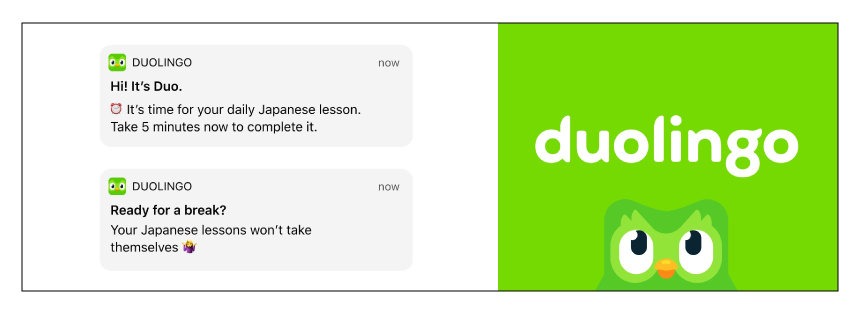
ANNI Hair Wax: The Total Package
Okay, we’re a little biased on this one (guilty!), but ANNI is a great example of what it looks like when messaging is consistent across every single touchpoint. From the moment you open the box—“Hi! I’m your hair’s new plant-powered BFF.”—you know what this brand is about. The tone is fresh, friendly, and tuned into internet culture (“Frizz? Never heard of it.” “You’re not going to get the ick.”). Even care instructions are packed with personality: “Keep me cool or I’ll have a meltdown.” ANNI speaks to their audience in an authentic way, reinforcing their tone and voice by humanizing the brand with the use of the first-person “I” and using language that feels fresh and relevant to their audience.
Check out the full ANNI Hair Wax case study here
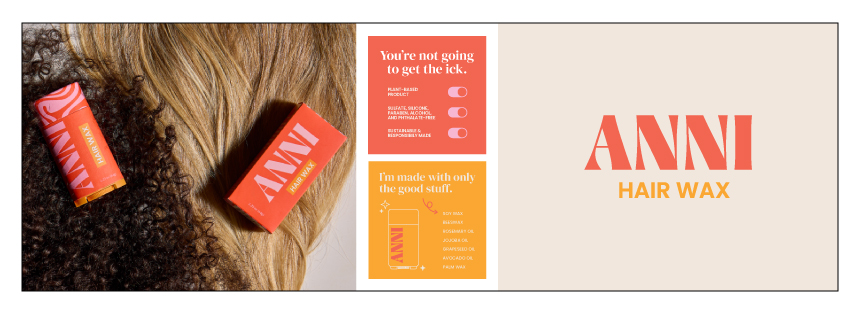
Words Matter
Your brand might look amazing, but if it doesn’t say anything worth remembering, you’re missing a huge opportunity. Thoughtful, consistent, personality-packed messaging is what makes people feel something. It turns a casual customer into a loyal fan. It’s what brings your brand to life beyond the visuals.
Whether it’s a sassy slogan, a heartfelt email, or a clever caption, the words you choose shape how people experience your brand at every single touchpoint. And getting it right takes more than a quick brainstorm.
That’s where we come in.
At Quill, we’re experts at blending good design with great writing. From brand strategy to tone of voice development to full-scale brand identity guidelines, we help businesses find their voice and use it to stand out.
Ready to make your brand messaging as strong as your visuals? Let’s chat.

